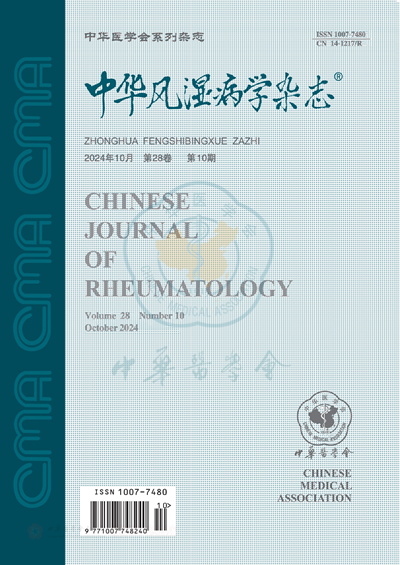Effect of placental protein 14 on the proliferation and differentiation of B cells
引用次数: 0
Abstract
Objective To investigate the effect and mechanism of placental protein 14 on the proliferation and differentiation of B cells. Methods The lymphocyte of human peripheral blood was separated by gradient centrifugation. Flow cytometry was used to detect the proportion of CD4+CXCR5+ follicular helper T cells (Tfh cells), CD4+CXCR5+Foxp3+ follicular regulatory T cells (Tfr cells), CD3-CD19+B cells and CD3-CD38+ plasma cells. ELISA method was used to detect the concentration of IL-21, IL-10 and TGF-beta in the supernatant, and the co-culture of cells was performed by Transwell chamber; t test was used for comparison between groups. Results The proportion of Tfh cells and Tfr cells in the control group was (2.52±0.16)% and (1.26±0.24)%, respectively, and that of the placental protein 14 groups were (0.84±0.09)% and (4.64±0.68)%, respectively. There was a significant difference between the two groups (t=9.150, P=0.000 8 and t=4.669, P=0.009 5). Pplacental protein 14 could further inhibit the secretion of IL-21 (t=5.086, P=0.007 1), and promote the increase of IL-10 and TGF-β concentration (t=3.599, P=0.022 8 and t=6.651, P=0.002 7). The percentage of B cells and plasma cells in the placental protein 14 group were (4.87±0.20)% and (5.41±0.54)%, which were significantly different from those in the Tfh cell group (t=4.997, P=0.007 5; t=5.110, P=0.006 9). Conclusion Placental protein 14 can inhibit the proliferation of B cells and differentiate into plasma cells by inhibiting the differentiation of Tfh cells and increasing the proportion of Tfr cells. Key words: Arthritis, rheumatoid; B cells; Placental proteins; T-lymphocytes, regulatory; T-lymphocytes, helper-inducer胎盘蛋白14对B细胞增殖和分化的影响
目的探讨胎盘蛋白14对B细胞增殖和分化的影响及其机制。方法采用梯度离心法分离人外周血淋巴细胞。流式细胞术检测CD4+CXCR5+卵泡辅助性T细胞(Tfh细胞)、CD4+CXCR5+Foxp3+卵泡调节性T细胞、CD3-CD19+B细胞和CD3-CD38+浆细胞的比例。ELISA法检测上清液中IL-21、IL-10和TGF-β的浓度,Transwell室共培养;t检验用于组间比较。结果对照组Tfh细胞和Tfr细胞比例分别为(2.52±0.16)%和(1.26±0.24)%,胎盘蛋白14组分别为(0.84±0.09)%、(4.64±0.68)%。两组比较有显著性差异(t=9.150,P=0.0001 8和t=4.669,P=0.009 5)。胎盘蛋白14可进一步抑制IL-21的分泌(t=5.086,P=0.0071),并促进IL-10和TGF-β浓度的升高(t=3.599,P=0.022 8和t=6.651,P=0.0027)。胎盘蛋白14组的B细胞和浆细胞百分比分别为(4.87±0.20)%和(5.41±0.54)%,与Tfh细胞组有显著差异(t=4.997,P=0.0075;t=5.110,P=0.0069)。结论胎盘蛋白14可通过抑制Tfh细胞的分化和增加Tfr细胞的比例来抑制B细胞的增殖并分化为浆细胞。关键词:关节炎、类风湿;B细胞;胎盘蛋白;T淋巴细胞,调节性;T淋巴细胞,辅助诱导剂
本文章由计算机程序翻译,如有差异,请以英文原文为准。
求助全文
约1分钟内获得全文
求助全文
来源期刊
自引率
0.00%
发文量
5947
期刊介绍:
CHINESE JOURNAL OF RHEUMATOLOGY is a professional academic journal of rheumatology published by the Chinese Association for Science and Technology and sponsored by the Chinese Medical Association at home and abroad, which was founded in November 1997 and published monthly on the 15th of each month. ISSN 1007-7480 and 14-1217/R in China.
CHINESE JOURNAL OF RHEUMATOLOGY reports on the leading scientific research results and clinical diagnosis and treatment experiences in the field of rheumatology, as well as the basic theoretical researches that have a guiding effect on the clinical practice of rheumatology and are closely integrated with the clinical practice of rheumatology, using the general practitioners of rheumatology as the main target readers.
Columns include: monographs, treatises, clinical research (clinical case review), basic research, short treatises, expert consensus, case reports, reviews, lectures, conference (symposium) proceedings, continuing education, academic dynamics, academic controversy and other columns (of which clinical research (clinical case review), basic research, short treatises are regarded as treatises).
Index: The journal has been accepted by the American Chemical Abstracts (CA) ‘China's scientific and technological paper statistics source journal (China's scientific and technological core journals)’ ‘Chinese core journals list’ ‘China Science Citation Database’ ‘China Academic Journals Comprehensive Evaluation Database’ ‘China Academic Journals Comprehensive Evaluation Database’. Comprehensive Evaluation Database of Academic Journals’ “Japan Science and Technology Agency Database”, Peking University Core Journals (2008 edition, 2011 edition, 2014 edition, 2017 edition), China Science Citation Database (2011-2012, 2013-2014, 2015-2016, 2017-2018, 2019-2020) and other databases.

 求助内容:
求助内容: 应助结果提醒方式:
应助结果提醒方式:


